
Siwa Oasis
As part of the my project (see here how I applied), me and the other participants were supposed to visit eight cities of Egypt. Siwa Oasis, a very small community near the border of Libya, was not one of them. After searching on the internet about the place, I decided to go. However, I had to pay an additional fee of 1800 EGP (100 euros). I am so glad I did that though because it was totally worth it. And I am going to tell you exactly why.
Siwa’s Salt Lakes
After spending the entire night on the bus to Siwa, we arrived in the village just in time for breakfast. We ate Egyptian traditional food including foul (beans), falafel, tomato and cheese salad, pita, baba ghanoush and, of course, tea.
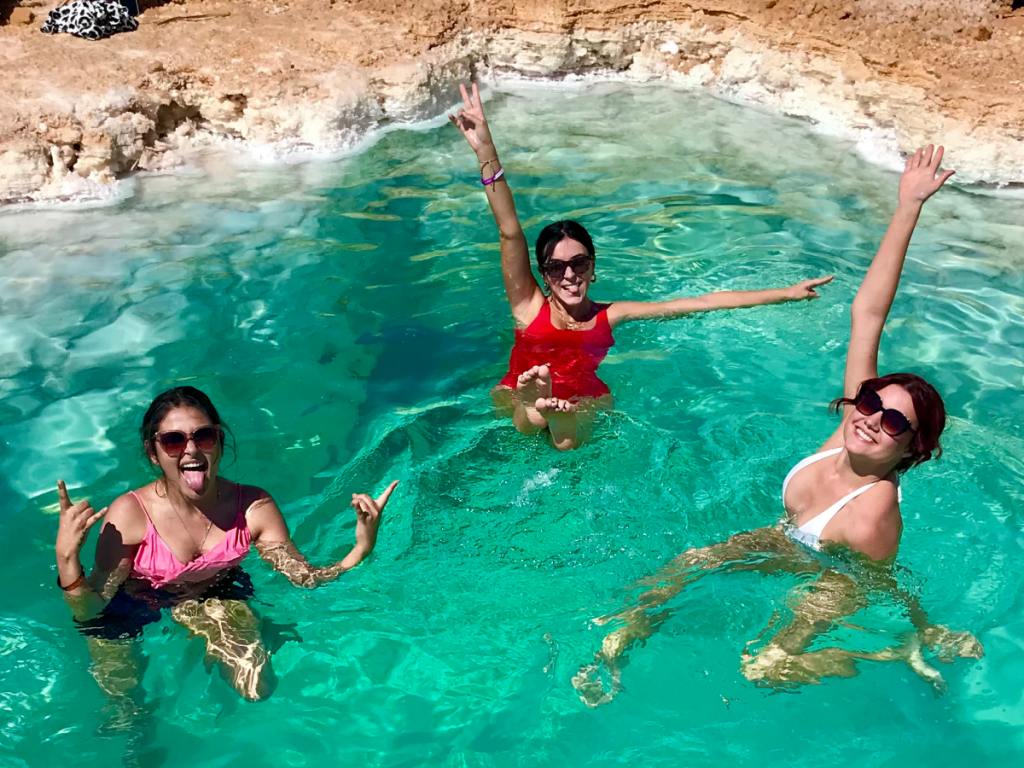
Then we took the car to the Salt Lakes where we bathed (actually more likely floated) in the pools. This was by far my favorite part of this trip. It’s a breathtaking landscape of deep blue and white salt lakes surrounded by golden dunes and big limestone mountains. They are actually situated in a huge saline depression in the desert (below sea level). The salt has been used for hundreds of years for building Siwi houses. It is still used today as building material for traditional houses, as well as for furniture, food conservation and for wellness treatments.
Cleopatra’s Spring & Fatnas Island
Our next stop was Cleopatra’s Spring. It is a natural hot water spring where Queen Cleopatra VII herself took a bath when she visited Siwa Oasis. Or at least that’s how the story goes. Local girls of Siwa used to bath in this place before the wedding. They believed they will become as pretty and charming as the Queen. We chilled there for a couple of hours while sipping on a delicious and very cheap fresh watermelon juice.
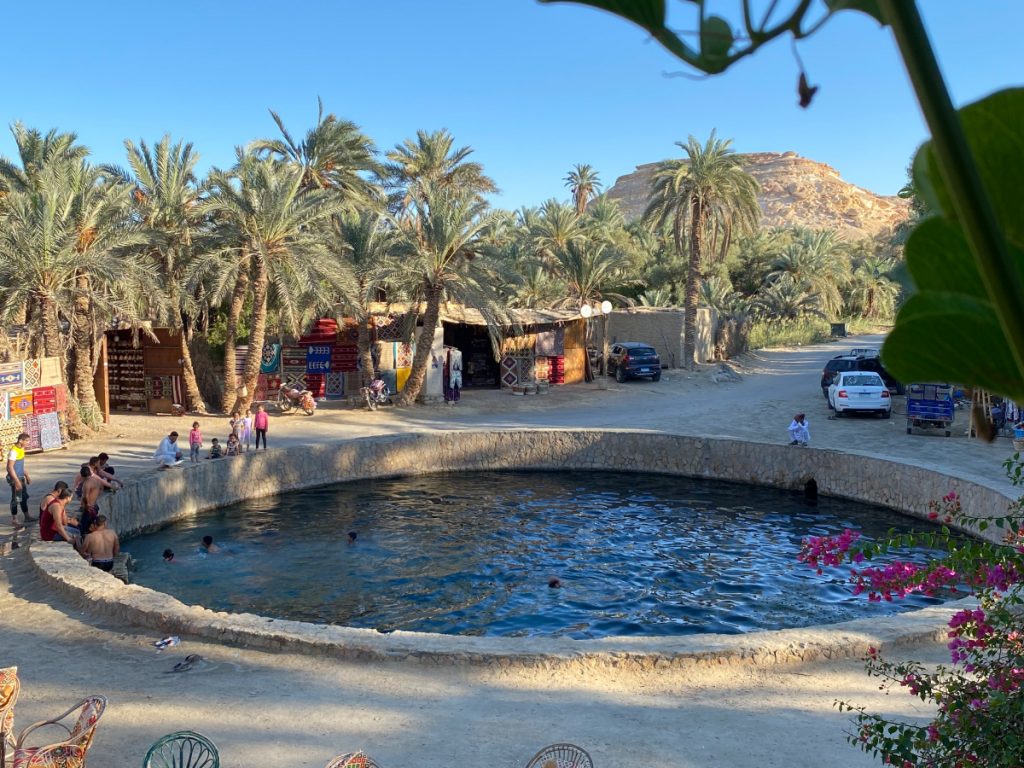
In the afternoon we went to Fatnas Island, which translates to Fantasy Island. There I witnessed one of the most beautiful sunsets of my entire life. Covered in lush palm trees with a secluded freshwater pool in its center, this island is a popular spot for swimming and sunbathing. We ended the night with an Egyptian dinner at the hotel and a Bedouin show by the fire.
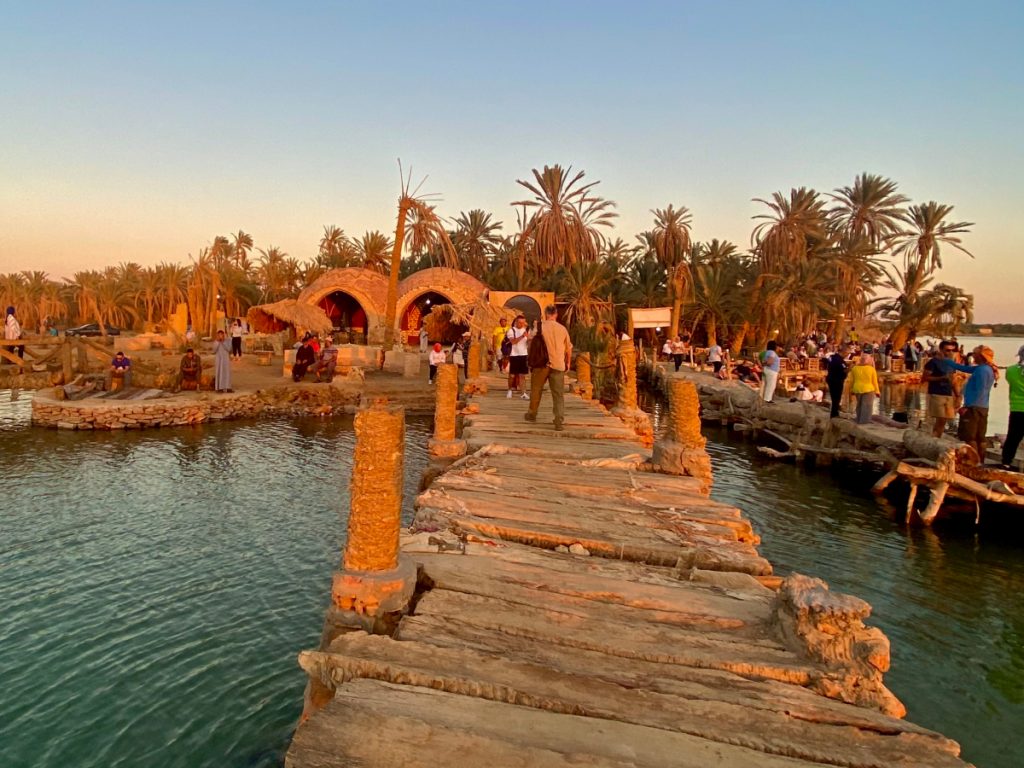
Mountain of the Dead and the Oracle in the Siwa Oasis
We started the second day of our trip with a visit to Gebel Al-Mawa. This mountain is home to thousands of graves which are cut into the bedrock giving it the name of “Mountain of the Dead”. A few of them can be visited and the paintings inside are still colored and well preserved.
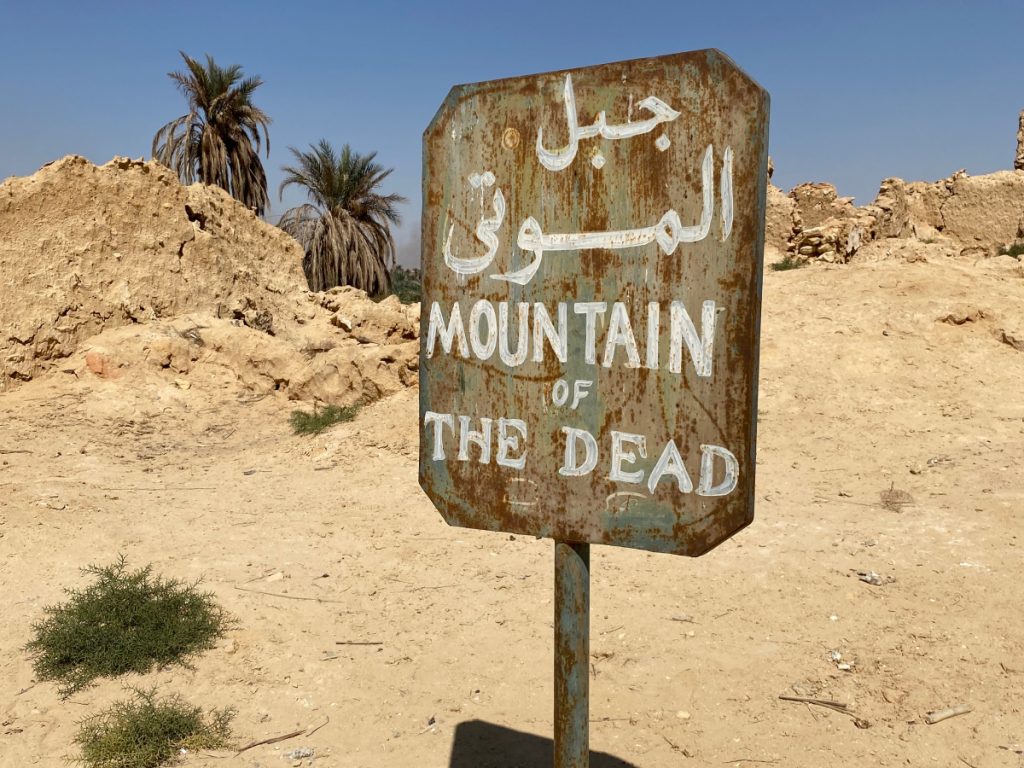
Next in line was the Oracle Temple. Siwa’s fame derives primarily from its ancient role as the home to this oracle of Ammon. It’s ruins are a popular tourist attraction which gave the oasis its ancient name Oasis of Amun Ra.
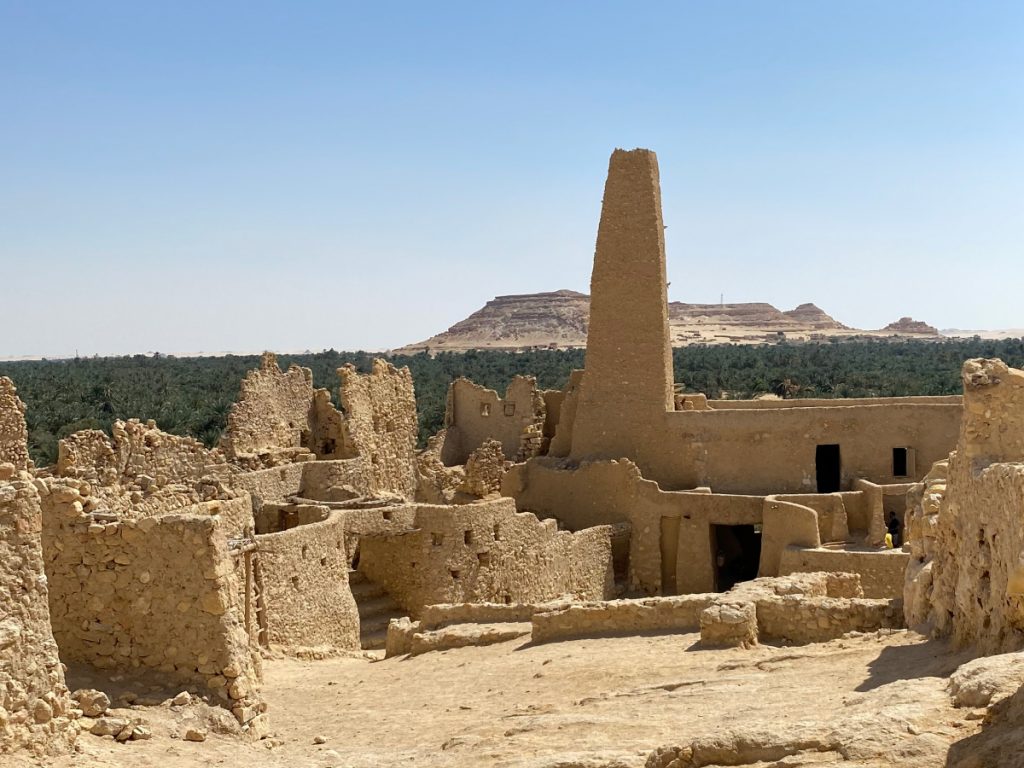
There are a number of myths about the founding of this temple. Oracles, manifestations of the gods, were very revered in the ancient world. Able to see into the future, they were consulted regularly prior to important decisions. The story goes that Alexander the Great consulted the Oracle in order to seek confirmation that he was the son of Zeus (Amun), and therefore a legitimate ruler of both Egypt and other lands that he conquered.
Safari in the desert near Siwa
The most exciting part of the trip was by far the desert safari. We took a 4×4 land cruiser and ventured into the Great Sand Sea. There we discovered fresh water springs and marine fossil beds while crossing some of the largest recorded dunes of the Sahara desert . I tried sand boarding for the first time in my life. Then we watched a magnificent sunset in the middle of the sand dunes while enjoying tea and dates (most common snack/fruit in Egypt). It was truly a once in a lifetime experience.
We had dinner by the fire and spent the night in a Bedouin camp in the middle of the desert. With no telephone signal and no internet whatsoever. The atmosphere was very peaceful and calming and I could see the midnight sky and the stars like never before.
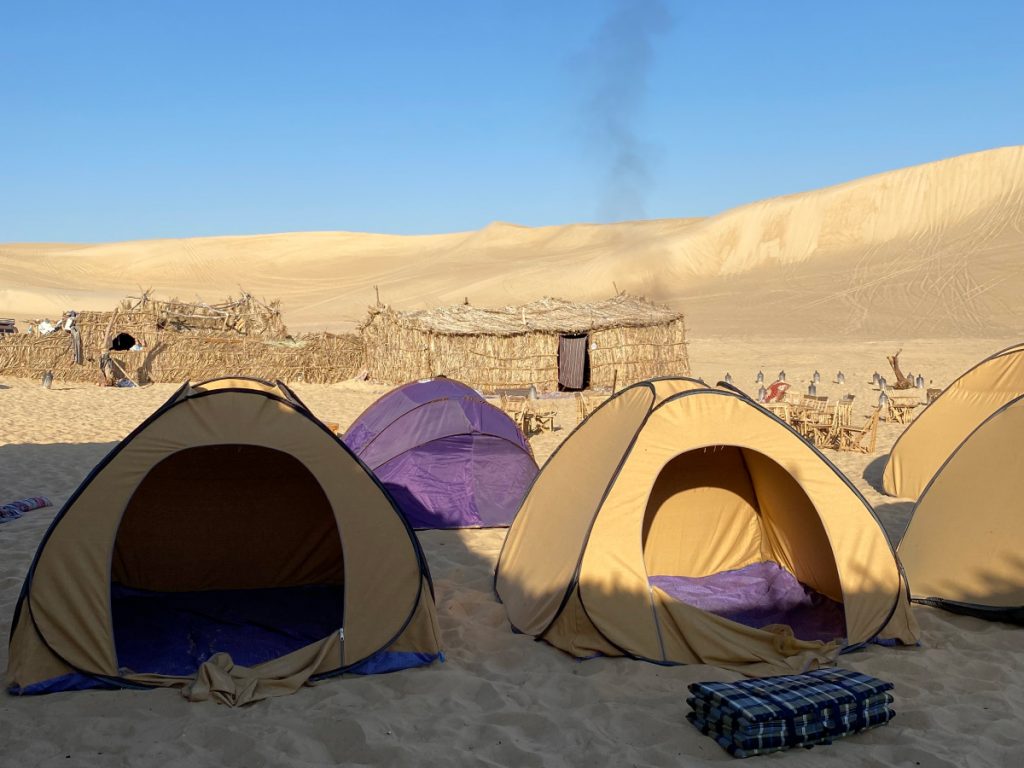
Ancient city of Siwa Oasis
On our last day, after a well-deserved sleep, we visited the Siwa Oasis market and the ancient city. “Shali” is a Siwi word meaning city. The village of Shali was built from the material of the archive, which is clay saturated with salt. It was originally built as a place to protect the Siwi people against potential attacks from other Bedouin tribes. Despite being quite abandoned as the inhabitants were forced to move out, it’s often a source of curiosity and exploration for tourists who visit the area due to its charm and uniqueness.
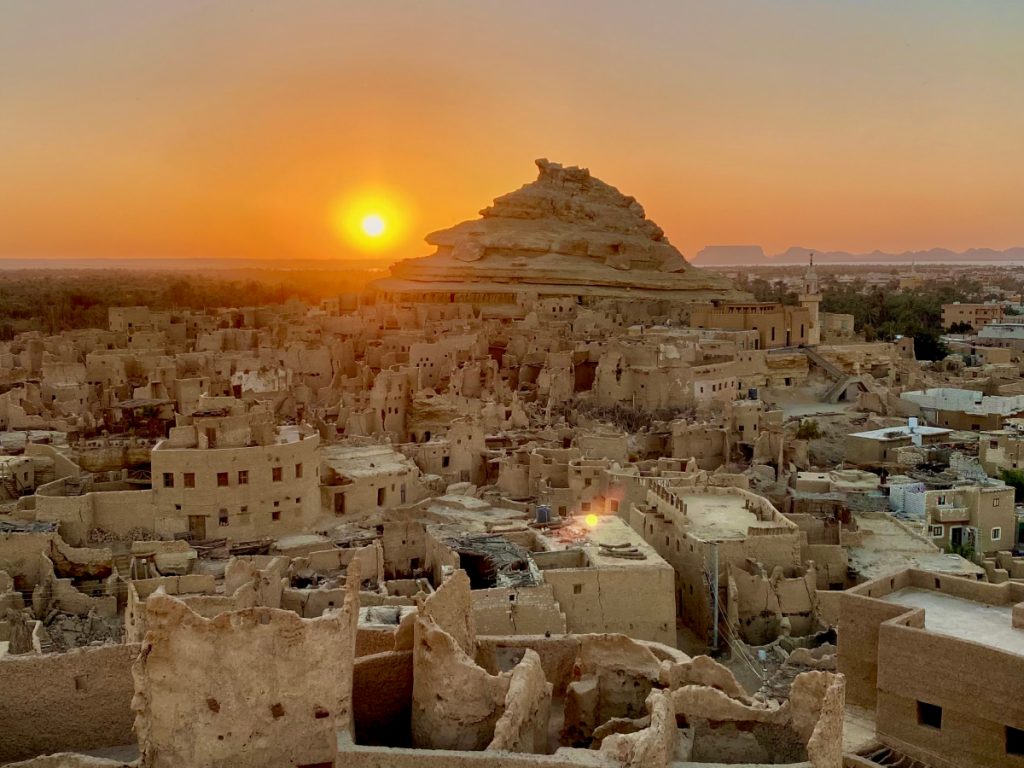


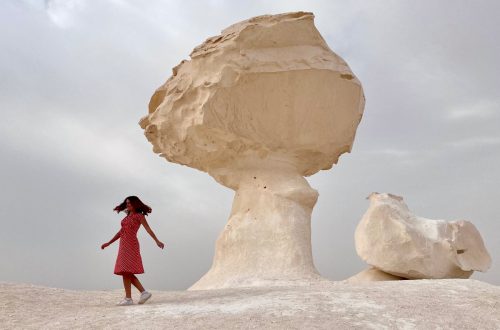
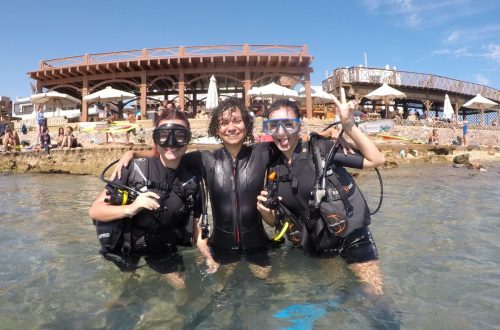

2 Comments
Pingback:
Pingback: